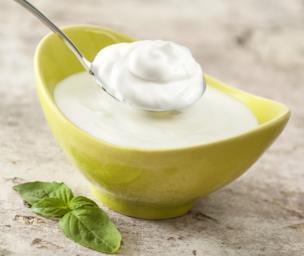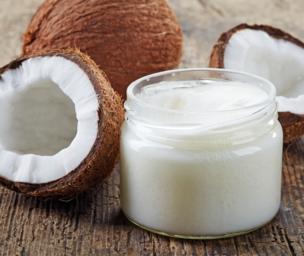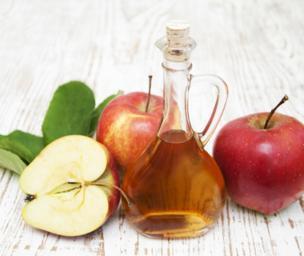Get Rid of a Yeast Infection
Yeast Infections
Candida, commonly known as yeast infection, is caused by a group of fungi called Candida albicans. They generally affect the vagina, but may also develop under the breasts, nails bed, lower abdomen, around dentures, and beneath skin folds. Pregnancy, chronic health conditions, stress, steroids, antibiotics, diabetes, and contraceptives may increase the risk of getting a yeast infection.
Some signs are burning, itching, swelling, pain in the vagina during sex, a burning sensation when urinating, and vaginal discharge that is odorless. Candida albicans are considered a part of normal vaginal flora, however, their overgrowth may cause a yeast infection. These symptoms can be managed with the help of over-the-counter creams. Within a couple of days, they respond to the treatment if the condition is uncomplicated.
However, if the symptoms worsen, contact a doctor. Other species of Candida may also cause infection, such as Candida glabrata, Candida krusei, Candida parapsilosis, and Candida tropicalis.
Treatment
Generally, the infection caused by Candida albicans is easy to treat. There are many over-the-counter medications available to treat vaginal yeast infections. These medications are available in the form of antifungal creams, tablets, ointments, suppositories, or medicated tampons. They belong to the azole drugs, which is a class of antifungal drugs. They include clotrimazole, fluconazole, terconazole, miconazole, tioconazole, and butoconazole. These medications are given along with other drugs to help relieve symptoms. Side effects of these medications are generally mild. While using creams and suppositories, do not use tampons, diaphragms, or condoms. Pregnant women should avoid fluconazole.
Some species of Candida are resistant to first line drugs. Azole drugs work best against C. albicans and other resistant Candida species. C. krusei is completely resistant to fluconazole, and C. glabrata strains are far less susceptible to the drug than C albicans. Nystatin may be prescribed to treat non-albicans yeast infections. It is available in the form of a vaginal cream and tablet. It should be applied or taken for 14 days.
- Nystatin: This is a naturally occurring anti-fungal agent that is derived from the filamentous bacteria and is a widely used treatment. Since it is not easily absorbed by the body, it is extremely safe. But due to this, infections that are entrenched in the digestive system lining cannot be eradicated with these medicines. However, up to one extent nystatin is able to reduce the symptoms of yeast infections. It can be used for two weeks at the most.
- Azole drugs: These drugs are mostly used to treat vaginal yeast infections and also chronic Candida. But they do have certain side effects. The azole drugs ketoconazole, itraconazole, and fluconazole are completely absorbed into the digestive system. They may damage the liver and kidney. People with chronic or systemic fungal infections can use them, but at a greater risk. Fluconazole and itraconazole are found to be safer.
- Fluconazole (Diflucan): This is used to treat chronic systemic Candida albicans, Candida tropicalis, and Candida parapsilosis. Itraconazole (sporanoz) is used to treat skin and nail infections. Mostly, a combination of azole and nystatin drugs is prescribed. Good results can be achieved through the combination of both drugs.
- Another newer medicine is voriconazole. It is available in tablet form and is effective against Candida albicans, Candida lusitaniae, Candida parapsilosis, and Candida tropicalis. Another medicine, posaconazole, is available in liquid form. It is effective against Candida krusei and Candida glabrata.
- Enchinocandins: These are not azole drugs. They cause cell death by affecting the biofilm and cell wall of the yeast. Their mechanism is the same as that of coconut oil. They are effective against Candida krusei and Candida glabrata. The medication in this class of drugs includes anidulafungin, caspofungin, and micafungin. All these are administered via IV.
- Polyene anti-fungal: These are used for fungal infections that are life-threatening. They are given intravenously. One such is amphotericin B. Sometimes, on stool test results, rhodotorula yeast can be seen, for which polyene antifungal can be used as the drug of choice. Even for other Candida species, it is effective except against Candida lusitaniae.
Other Medications
Fungal infections of the skin, fingernails, toenails, and hair can be treated using medicines such as griseofulvin, FULVICIN-UF, and GRIS-PEG. Another medicine is lamisil, which is used to treat yeast infections on the skin. Another topical medicine is Mycelex, which is also used to treat yeast infections on the skin.
Some may be prescribed douching in the case of a vaginal yeast infection or an oral rinse for thrush.
- Over-the-counter creams: Some topical preparations are available, such as Monistat and Gyne-Lotrimin. These are three and seven days’ regimens and are very effective.
- Prescriptions creams: Gynazole-1, available as a single dose cream, and terconazole, available in three and seven days’ regimens, are two topical yeast medications. They require a prescription. Terconazole is available under the brand names Terazol and Zazole.
Pill or Cream?
Yeast infection pills, such as fluconazole (diflucan), are more convenient than the creams, which are applied intravaginally. However, both are effective 90% of the time. Still, patients prefer the oral treatment over applying the cream. Creams are available over the counter, and the side effects are usually less and milder, whereas the pill may cause side effects such as headache, upset stomach, and rash. In addition, a single dose of fluconazole may take more time to relieve symptoms. However, resistance to this pill is uncommon and the pill is less expensive.
Home Remedies
Some people may opt for home remedies. The most effective ones are:
- Boric acid suppositories
- Garlic
- Tea tree oil
- Probiotic yogurt and supplements
- Douching
Yogurt: A good bacteria, lactobacillus, in yogurt controls the infection growth in the body. Use plain, unsweetened yogurt. Apply it on the affected area of skin. Leave it for 20 to 30 minutes or overnight. In the case of a vaginal yeast infection, a tampon should be dipped in the yogurt and then inserted into the vagina for two hours. Also, yogurt can be included in the diet.
Cranberries: These fight against yeast infections since they have antifungal and antibacterial properties. Drinking unsweetened cranberry juice speeds up the healing process. Cranberry tablets can be taken two to three times a day.
Coconut oil: The antifungal properties of coconut oil kills the fungi, which cause the infection. Apply coconut oil externally on the affected area three times a day. An equal proportion of coconut oil and cinnamon oil can be applied on the affected skin area as well.
Apple cider vinegar: This helps to get rid of the fungal infection. In one cup of warm water, add two tablespoons of apple cider vinegar and drink twice a day. In a hot water bath, add some drops of vinegar and soak for an hour in this; it helps lessen the irritation and itching.
Boric acid: This has antifungal properties, but is not recommended for pregnant women. Dilute it in water and apply the solution over the affected skin area. Rinse it after a few minutes. Repeat this for two weeks.
Garlic: Its anti-fungal properties help treat many forms of yeast infection. Crush a few garlic cloves, make a paste, and apply it on the affected area, or mix garlic oil in vitamin E and coconut oil and apply it on the affected area. Garlic cloves can also be eaten; this helps treat yeast infections, although it may cause bad breath.
If the recurring yeast infection is caused by C. albicans, the normal yeast infection treatment will be effective, however, if the infection is caused by another species of Candida, treatment such as nystatin may be needed in the form of a vaginal cream, tablet, or gel that contains flucytosine and amphotericin B. Some women get recurrent yeast infections or chronic yeast infections. The reason is yet not clear why, but there are several risk factors such as estrogen therapy, diabetes, birth control pills, pregnancy, and conditions that affect the immune system.


















